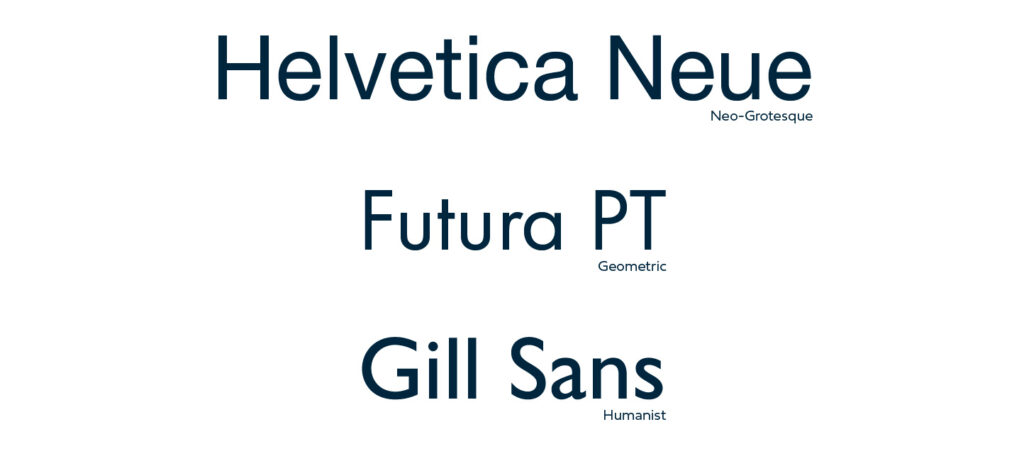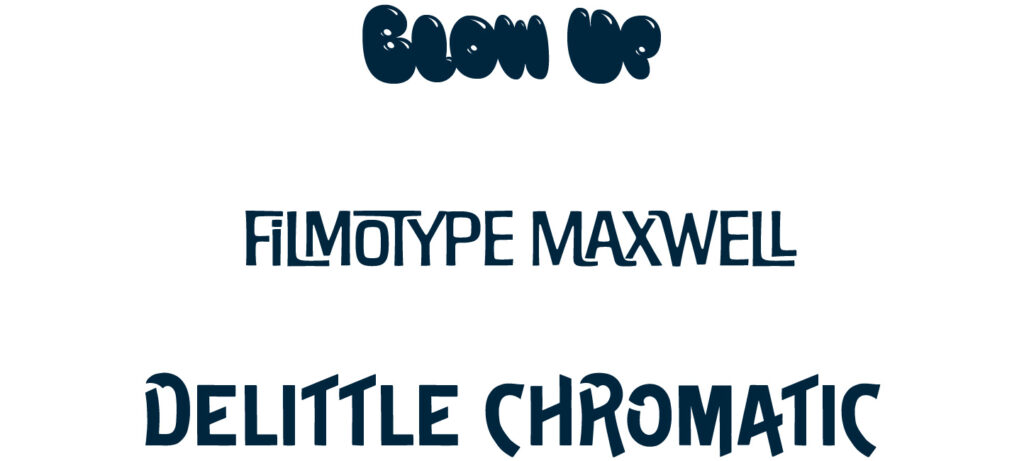There are a lot of moving parts when building out a brand identity. When looking over the different components, particularly with typography, understanding each style and what makes them unique is important when deciding what works best. In this blog post, we’ll be diving into typeface styles that you might come across when working with a designer.
What is a typeface?
A typeface is a set of letters, numbers, punctuation, and other “glyphs” that share a common style. Some common examples are Times New Roman, Comic Sans, or Helvetica. You might be thinking, “John, those are also called fonts!” Well, true..sort of. A font is a little bit more specific than that. For example, 7pt Times New Roman Bold would be considered a font, which is part of the typeface Times New Roman.
Styles
Now to get back to the main focus here, styles. There is some debate as to what the main styles of type are, but these are typically the ones commonly agreed upon.
- Serif
- Sans-Serif
- Script
- Display/Decorative
Serif
A serif typeface has small lines at the beginning or end of the letter. Think of Times New Roman. The “feet” looking parts at the bottom of the letter “n” are serifs. They can be done in a few different sub-styles: transitional, slab, or old style are just a few examples. Abuv’s logo, for instance, is a custom serifed type that falls somewhere between transitional and old style.

Sans-Serif
On the opposite side of the spectrum, sans-serif typefaces are those that do not contain these lines. The font you’re reading this in, for example, is a sans-serif. Like serif, there are some sub-categories that fall into the Sans-Serif typeface. Helvetica falls under Neo-Grotesque, which is an updated version of Grotesque, one of the first styles of the Sans-Serif typeface. The Geometric sub-category uses near perfect shapes, such as circles and rectangles, to form the letters. Gill Sans, another popular Sans-Serif, can be categorized as Humanist. This style takes some influence from calligraphy, which can be seen well in the “a” and “s” in the example below.

Script
Script typefaces are usually linked to different handwriting styles. Within this category, things can get pretty broad, though. You have everything from Bickham Script, which is much more formal (similar to how the Declaration of Independence was written, for example), to a much more casual typeface like Al Fresco or even Brush Script.
They don’t necessarily need to look like cursive in order to be considered script, either. Blackletter, which is inspired by how text was written in the Middle Ages, is another fine example. It isn’t used as often for large bodies of text, however, and also falls into the next category.

Display/Decorative
Display typefaces aren’t necessarily a category all on their own, but can encompass pieces from others. The typefaces that fall under Display/Decorative are those that can’t be used in large sections of text as they are can be harder to scale, read, and adjust. Some are very well done, but using it too often can wind up being too much of a good thing.

So when is it the right time for each?
Every typeface style has built it’s own reputation and uses. Serif choices can give a classical feel while sans-serif typefaces are sometimes seen as modern and minimalist. But that doesn’t mean there is a hard line for where each style is appropriate. A lot of luxury brands with a long history use a sans-serif type. Companies that use script include Coca-Cola, Kellogg’s, and even Instagram. Abuv went from using a display sans-serif type to having our brand built around a serif one because I felt it represented us better.

My recommendation is not to stick to a specific style just because that’s where the trend is heading. Think about what your brand represents. How are you unique from your competitors? What is the message you want communicate to your customers? These are the kinds of things you should have answers to when talking with a designer. It’ll allow them to better refine their choices as they experiment and build your identity.